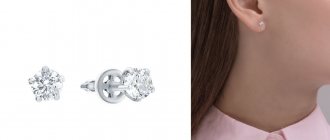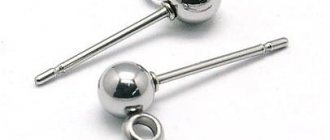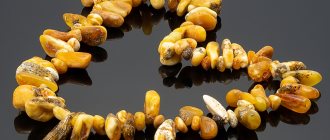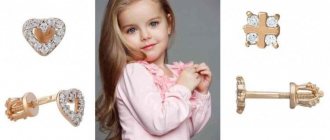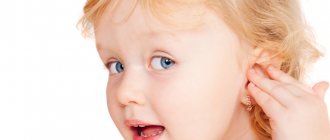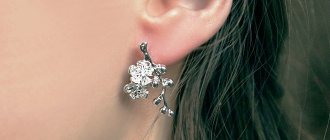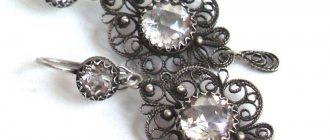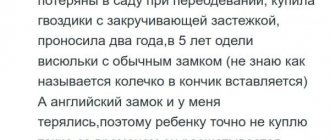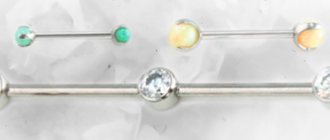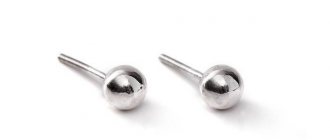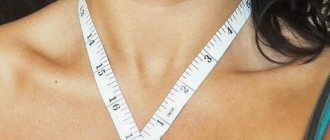How to remove silicone clasps from earrings
Just recently, stud earrings with silicone plugs have come into fashion. They are very comfortable in the sense that they do not put pressure on the earlobe, they are easy to fasten and unfasten, and if the clasp is lost, you can easily buy a new one inexpensively.
However, few people know that these earrings, like jewelry with an English lock, also need to be removed periodically (at least once a week). Otherwise, the silicone hardens and cannot be removed (this is especially true for jewelry that uses not very expensive materials). What to do in this case?
- Disinfect your hands, earrings and ears.
- If the silicone plug is soft, but the earrings still do not unfasten, then the clasp must be rinsed very well with peroxide or another disinfectant. Dirt from your hands, grease and ichor remains solidify where the jewelry is secured and prevent it from coming unfastened. When the dirt is washed away, then the earring will most likely open.
Tip #1.
If you have stud earrings with
a silicone clasp without metal inside
, then follow these steps:
- Wash your hands with soap and disinfect your earlobe and jewelry lock with peroxide.
- Next, using a regular hairdryer, try to heat the clasp so that the silicone softens a little, but this must be done very carefully so as not to burn your ear or head.
- After this, using cotton wool or a cotton pad soaked in peroxide, carefully grasp the silicone clasp with one hand and the earring itself with the other and pull them in different directions. Everything should work out.
- After you have completely freed your ear, carefully sterilize the earlobe and let the ear rest for several days without jewelry.
Tip #2.
If
there is a metal insert inside the silicone fastener
, then a regular hairdryer is not enough.
- Disinfect your hands, ear and jewelry.
- Soak a cotton pad well in oil (whatever you have on hand) or in Vaseline and thoroughly wipe the earring on both sides. Oil particles should get into the contact area between the fastener and the rod.
- After everything is thoroughly soaked, try to pull the stud clasp out of the ear.
- If everything works out, then sterilize the earlobe and earring.
| Do not try to cut the silicone fasteners yourself with a knife or any other sharp object; this may be unsafe and you may injure yourself. |
If none of the proposed methods helped, then do not torture your ear, but rather go to a hospital or piercing salon, where professionals will quickly and painlessly help you solve this small problem. And for the future, make a note to yourself that any earrings need to be removed and cleaned from time to time so that the lock does not become clogged and so that the ear does not become attached to the jewelry.
Ear piercing for children
You can get your child's ears pierced at any time. For a professional, this is a matter of a couple of minutes. There is an opinion that until about one and a half years of age, a child does not experience a feeling of fear and forgets about pain quite quickly - it is very reminiscent of the joke “a patient, if he is well fixed, does not need anesthesia,” isn’t it? In practice, even six-month-old babies (as a rule, who have already had experience with medicine in their short lives - vaccinations, blood donations, etc.) begin to cry at the sight of a white coat. In the best case, the child will allow the first ear to be pierced, but on the second he will roar and resist with full force, which will not help the specialist at all. In general, the main problem with children's piercings is that there are two ears.
Ear piercing is contraindicated if your child suffers from serious chronic diseases (diabetes, hereditary skin diseases, eczema, immunodeficiency), if there is a predisposition to keloid scars, or if the child has recently (less than two weeks ago) suffered an acute infectious disease - or is currently feeling unwell .
Is it safe to pierce a baby's ears? If all conditions are met, it is safe. But the mother must understand that she is doing this exclusively for herself, at her own taste and risk. Until the age of 4-5 years, the auricle is actively growing; in infants, the lobe is not fully formed and it can easily result that when the girl grows up, the pierced hole will not be where we would like.
Even if the baby is lucky with the shape of his ears and the studs do not interfere with his sleep (digging into the point behind the ear), the injury will still bother him for some time. And the pen will reach out to the source of concern. Of course, a baby can swallow not only an accidentally unfastened earring, but also any other small object. Only other small objects are usually removed from the child. And if the puncture, God forbid, becomes inflamed, then it will hurt very much, preventing you from sleeping or eating.
From the perspective of official medicine, piercing is self-harm, damage to a healthy organ for no reason. So, at a minimum, it is advisable for a person to decide for himself whether he should get his ears pierced or not. An infant needs maternal warmth, protection, affection, as well as careful and responsible upbringing, and not at all piercing the flesh with the incomprehensible goal of “let it be like everyone else, let it be patient.”
But it is also impossible to deny that after 11 years the risk of keloid scar formation increases two and a half times. We would like to reassure you: if the child is in good health, ear piercing will not cause any harm to your child. Our opinion as professionals is that it is best to wait until your daughter/son has made an informed decision about getting her ears pierced. You should have seen how much pride the girls have in their eyes - when they came THEMSELVES and leave the office - proud, “just like adults,” charming in their new earrings. None of the six-year-old children sigh or grieve for more than 30 seconds after a puncture. In our experience, in healthy children who are calm and positive, piercing and subsequent healing of the puncture channel go completely without problems.
The founder of auriculotherapy (a pseudoscientific field not recognized by official medicine), the famous P. Nogier at one time contributed to the birth of the myth that it is on the earlobe that a lot of important active points are concentrated, and getting into the one that corresponds to the projection of the eye can cause visual impairment . There is no need to worry about this: any acupuncturist will explain to you that bioactive points do not tolerate constant irritation and will definitely migrate, so piercing will neither worsen nor improve your vision.
Having decided to pierce your child’s ears, you should contact a clinic or salon that has a medical license, because, according to current legislation, this procedure must be performed by a cosmetologist who at least has a secondary medical education. A puncture with a needle heals better because... the needle pushes the tissue apart, while the gun “cuts through” the piercing channel - in this case, more thorough post-piercing treatment is required. But that’s why we need a gun - to quickly pierce the ear - bloodlessly and without suffering.
Our clinic uses a pistol from the English company Caflon Ltd. This is a well-known manufacturer of truly unique equipment designed for ear piercing. This pistol differs from its analogues in its increased reliability; it never jams or jams. The discomfort from the puncture can be mitigated by applying the anesthetic Emla for 15 minutes.
Only special sterile stud earrings of the same brand, made of inert medical steel, are suitable for the pistol. So if you want to immediately put gold earrings in your ears, you will have to pierce them with a special disposable needle. Our advice in this case is to wear Caflon studs for a month and then change to jewelry. The fact is that even gold of seven hundred and fiftieth standard contains nickel among the impurities - a very strong allergen. When the puncture has already healed, nickel will come into contact with the skin, the barrier organ, and if such metal is placed in a fresh wound, the risk of allergies will increase by an order of magnitude. Silver products are excluded for six months, because... it is a very active, easily oxidized metal. For kids, it is better to choose small rolled earrings, because... The prongs may get caught on the vest or hat.
Before the procedure, you should wash your child’s hair and change the pillowcase on the pillow. During the first days, it is better for a girl to collect her hair so that her ears are open. Swimming in open water should be postponed until the punctures have completely healed; after a month you can carefully swim in the pool.
The main rule for the healing of any piercing is that the earring must be dry and clean. After a pistol puncture, the main treatment agent is 3% hydrogen peroxide; it most effectively removes exudate. For some, three treatments a day are enough, but if the exudation is strong and the earring is again stained with discharge, it needs to be cleaned as soon as you notice it. The usual healing time for a piercing in the earlobe is a month, but the risk of infection is highest in the first three days, so treatment should be especially thorough at first.
And in conclusion, we draw your attention once again: not all girls wear earrings, and not all men like pierced ears. Fashion is changeable and you won’t be able to guess what kind of earrings and how many earrings your daughter will want to wear in one ear. Therefore, the conscious choice - what to do with the ears, whether to pierce them or not - must be made by the child himself. And the parents’ job is to show him all sides of this decision, both positive and negative, in an accessible and loving way. But if the decision has already been made, our task is to ensure maximum safety and impeccable quality of the procedure performed.
| Name of procedure | Price |
| Ear piercing (with anesthesia) | 1000 rub. |
What earrings can I wear later?
Much depends on how many weeks have passed since the piercing and how the healing period proceeded . If the tissues quickly recovered, the wound did not get wet or bleed profusely, and the swelling subsided at the time specified by the master, then by the time the earring-stud is removed, the walls of the hole will be lined with more or less durable skin. It will withstand inserting jewelry of a different design than studs.
Important! The use of a fastener of a different design is acceptable, but you cannot use jewelry with a pin of a larger diameter.
If the recovery period proceeded with complications, then you need to choose a product with a straight, short and non-curved pin, which ends with the simplest possible clasp . The new jewelry should also be made of the same material as the old one - this way the ear will get used to it faster, and the process of rejection is unlikely to start. And don't forget to pay attention to the sample. This is important, since the sample is an indicator of the presence of impurities. If there are more of them in the second decoration than in the first, then this can cause unpleasant symptoms.
Another important criterion is pin diameter . The formed channel has the size that was given to it by the gun and the subsequent wearing of studs. Therefore, you should not put on earrings whose pin is much wider than the frame of the jewelry used during the healing of the puncture wound. This will lead to the expansion of the hole by further traumatizing old and barely formed new cells.
How else can you remove earrings?
It would seem that there is nothing complicated in the procedure for replacing earrings, but quite a lot of people complain that the lock cannot be removed. How to remove medical stud earrings? Tips will help you carry out this process correctly and painlessly:
- Quite often, ichor gets into the lock, which dries up and does not allow the earring to be unfastened. In this case, you can try soaking the lock with alcohol or cologne. You can also try to soak the dried ichor on the earring while taking a bath.
- You can try to open the lock with nail scissors. You need to insert each point into the rings of the lock and gently release them. You should not do this procedure yourself; you will need outside help.
- As a last resort, you can try to bite the earring using wire cutters. You need to act very carefully so as not to damage your ear.
The last two tips are quite controversial. If handled incorrectly, you can damage the lock, bend the earring, or injure your ear. Therefore, you should think several times about whether it is worth resorting to such methods if it was not possible to remove the carnations in a safe way.
Myths and advice from professionals
- The healing time for the hole is different for everyone, but with proper care and compliance with all precautions, it is about three weeks.
- Professionals recommend doing piercing with a special machine only in the earlobe. In other places, such as ear cartilage, navel, wings of the nose and lips, it is strictly not recommended. The punctured part may become deformed and healing may take longer.
- After performing such a minor operation as piercing the ears or other parts of the body, it is not recommended to take a very hot bath or visit the sauna and swimming pool for the first time. By steaming the puncture site, the healing process will be long and painful.
- Clean sea water is beneficial for the healing of punctures.
- You should not agree to piercing while your body is recovering from surgery or illness.
- During a session in the salon, the visitor can always request anesthesia.
- There is an opinion that in the earlobe there are more than a hundred active points responsible for hearing, vision and the functioning of internal organs. And if you make an unsuccessful puncture and get into any of them, the functioning of any of these senses may be disrupted. It's just a myth. Of course, these zones really exist, but not in the lobe area.
Treatment of children with acute pharyngitis with local anti-inflammatory drugs
What are the symptoms of acute pharyngitis? What do treatment measures include? What are the features of treating infants?
Acute pharyngitis is an acute inflammation of the pharyngeal mucosa - a common manifestation of acute respiratory diseases. Typically viral in origin, it may also be associated with group A β-hemolytic streptococcus, Mycoplasma pneumoniae, or other pathogens.
As a rule, with pharyngitis, children complain of pain, discomfort in the throat (burning, soreness, itching), coughing, and sometimes itching and pain in the ears. Infants cannot complain of being unwell, but attentive parents pay attention to restless behavior, sleep disturbances, and worsening appetite. Pharyngitis can be combined with other manifestations of acute respiratory infections, such as runny nose, cough, fever, conjunctivitis.
The diagnosis of pharyngitis is made based on examination of the pharynx: there is hyperemia, swelling and infiltration of the mucous membrane of the posterior wall of the pharynx, velopharyngeal arches, and sometimes the soft palate. With lateral pharyngitis, hyperemia and swelling of the lateral ridges of the pharynx are determined. It is difficult to distinguish viral pharyngitis from bacterial pharyngitis based only on physical examination data. In both cases, during pharyngoscopy, the mucous membrane of the pharynx may be slightly hyperemic or severely inflamed and covered with a film or purulent exudate. Fever, cervical lymphadenopathy and leukocytosis are observed with both viral and bacterial pharyngitis, but perhaps they are more pronounced with the latter.
Therapeutic measures for pharyngitis include the following manipulations.
- Gargling with antiseptic, herbal solutions (for example, a solution of chlorophyllipt, rotokan, sea salt, eucalyptus, etc.) 3 - 4 times a day after meals.
- Irrigation of the pharynx with antiseptic or antibiotic-containing aerosols (such as Hexoral, Ingalipt, Cameton, Stopangin, Yox, Bioparox, Tantum Verde, etc.) 2-3 doses 2-4 times a day.
- Resorption of tablets or lozenges with an antibacterial, analgesic, emollient substance (faringosept, falimint, strepsils, laripront, etc.).
- For bacterial pharyngitis, systemic antibiotics are necessary.
Infants and young children cannot gargle or swallow tablets, so they are only prescribed to drink plenty of fluids and irrigate the throat with an antiseptic. It should be noted that children under two years of age should use all aerosols with caution due to the possibility of developing a spasm of the glottis.
The purpose of this study was to evaluate the effectiveness of a complex of local conservative measures administered to children with acute pharyngitis.
The study covered the period from October to December 2002. We observed 32 children (15 boys and 17 girls) aged 5 to 15 years (average age 9 years) with a diagnosis of acute pharyngitis. In most cases, pharyngitis was a manifestation of an acute respiratory viral infection. Children with ARVI complicated by other pathologies of the ENT organs or upper respiratory tract (sinusitis, acute catarrhal otitis media, tracheobronchitis), as well as patients with tonsillitis, were not included in the study.
| Table 1. Prevalence of complaints in acute pharyngitis in children |
The main complaints made by children are reflected in table. 1.
As can be seen from the table, the main complaints presented by children were pain, soreness and/or itching in the throat. Approximately half of the children had other signs of acute respiratory infection (runny nose, coughing). 10 children (31.3%) had a rise in body temperature (maximum up to 37.8°C), and 8 (25%) had general malaise. Sleep disturbance and loss of appetite were observed in isolated cases.
Pharyngoscopy revealed more or less pronounced hyperemia of the mucous membrane of the anterior palatine arches and the posterior pharyngeal wall in all children. Swelling and hyperemia of the lateral ridges of the pharynx were observed in 7 (21.9%) patients. In 5 (15.6%) patients, pronounced inflammatory phenomena were observed.
All children underwent the following course of conservative treatment with local anti-inflammatory drugs.
- Gargling with a 1% solution of chlorophyllipt 3 times a day.
- Irrigation of the pharynx with hexoral solution, 2 doses 2 times a day.
- Resorption of pharyngosept tablets, 1 tablet 3 times a day.
The duration of treatment was 7 days.
The effectiveness of treatment was assessed on the 4th and 7th days after the start of therapy. The criteria for the effectiveness of treatment were the following indicators:
- cessation of complaints;
- normalization of the pharyngoscopy picture;
- good drug tolerance.
The results of the treatment are presented in table. 2.
| Table 2. Treatment results |
From the presented data it is clear that on the 4th day after the start of the course of treatment, complaints ceased in more than half of the patients (56.3%), the pharyngoscopic picture returned to normal in 12 patients (37.5%). By the end of treatment (on the 7th day), none of the children had any complaints; In all children, inflammatory manifestations in the pharynx were relieved. No adverse reactions were observed during treatment with these drugs in any of the subjects studied.
Thus, a set of conservative measures using local anti-inflammatory drugs is effective in the treatment of uncomplicated acute pharyngitis in children and allows one to avoid the use of systemic antibacterial agents.
R. Kh. Nurmukhametov, Candidate of Medical Sciences, Moscow
Note!
- Acute pharyngitis is an acute inflammation of the pharyngeal mucosa and is a common manifestation of acute respiratory diseases.
- Pharyngitis can be combined with a runny nose, cough, fever, and conjunctivitis.
- The diagnosis of pharyngitis is made based on examination of the pharynx
- The main complaints presented by children are pain, soreness and/or itching in the throat.
- Carrying out a set of conservative measures using local anti-inflammatory drugs is effective in the treatment of uncomplicated acute pharyngitis in children
